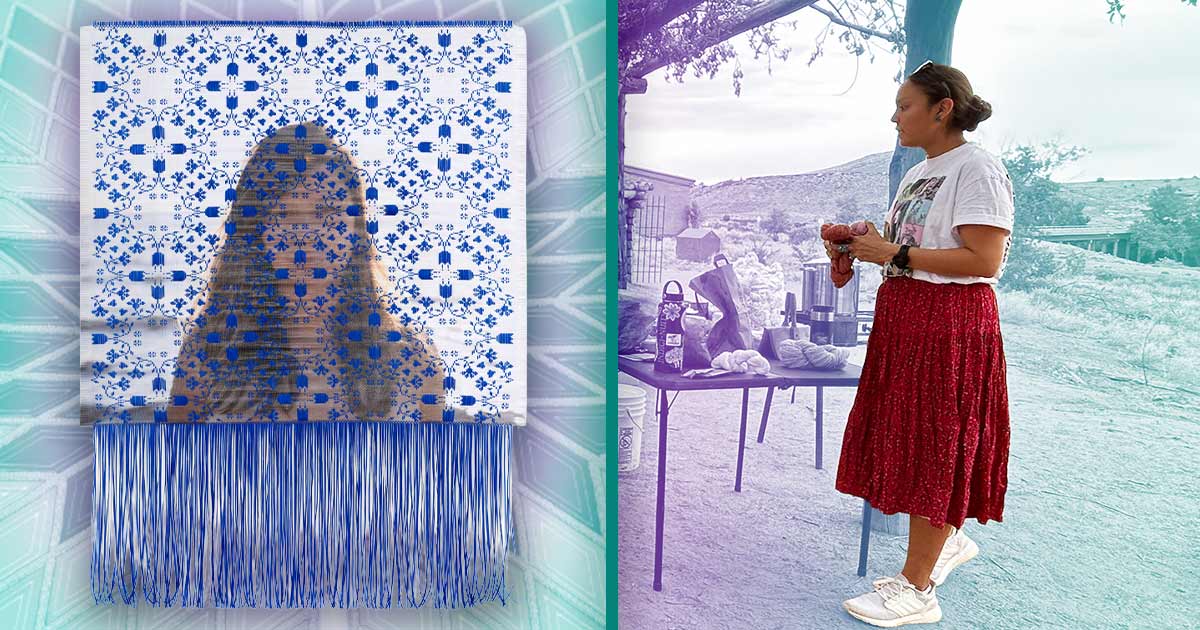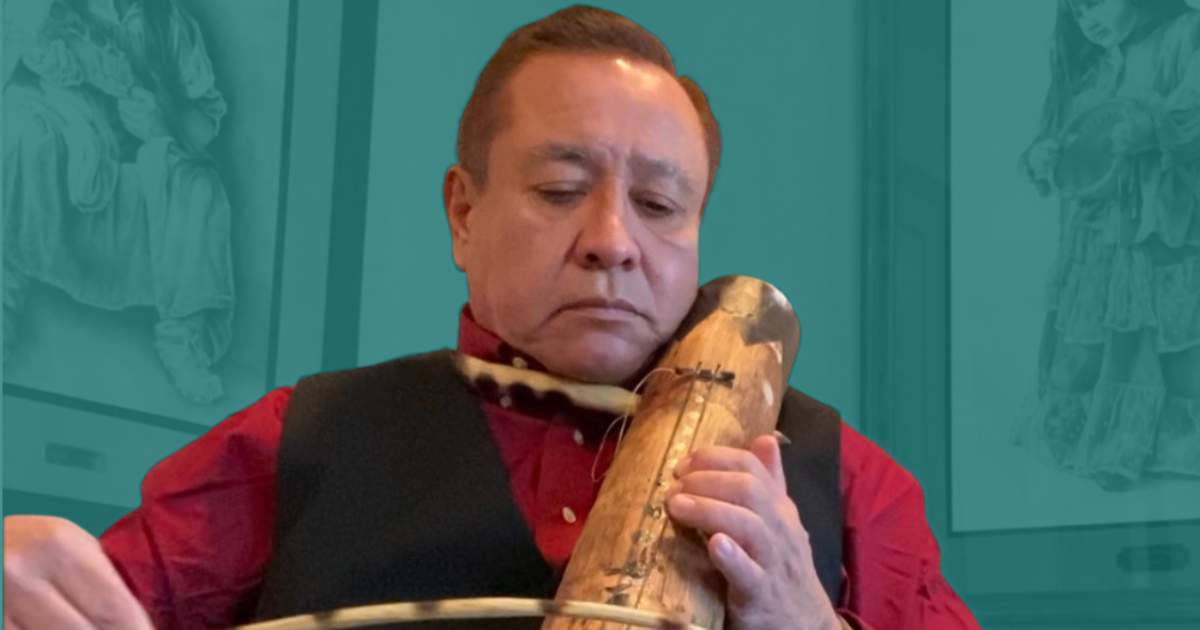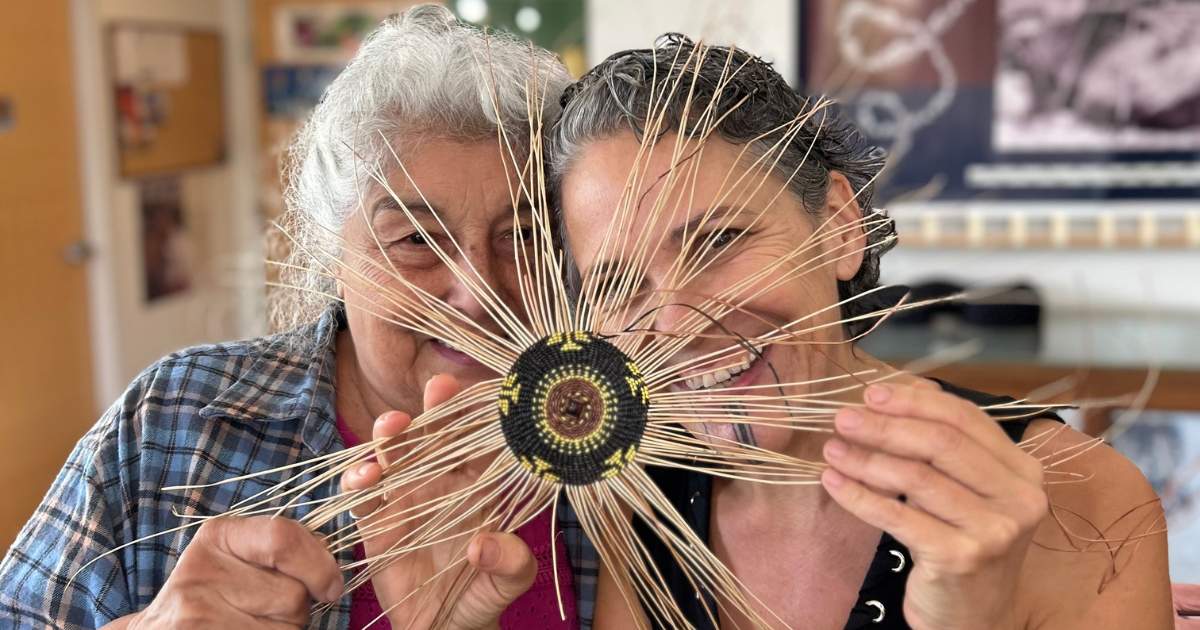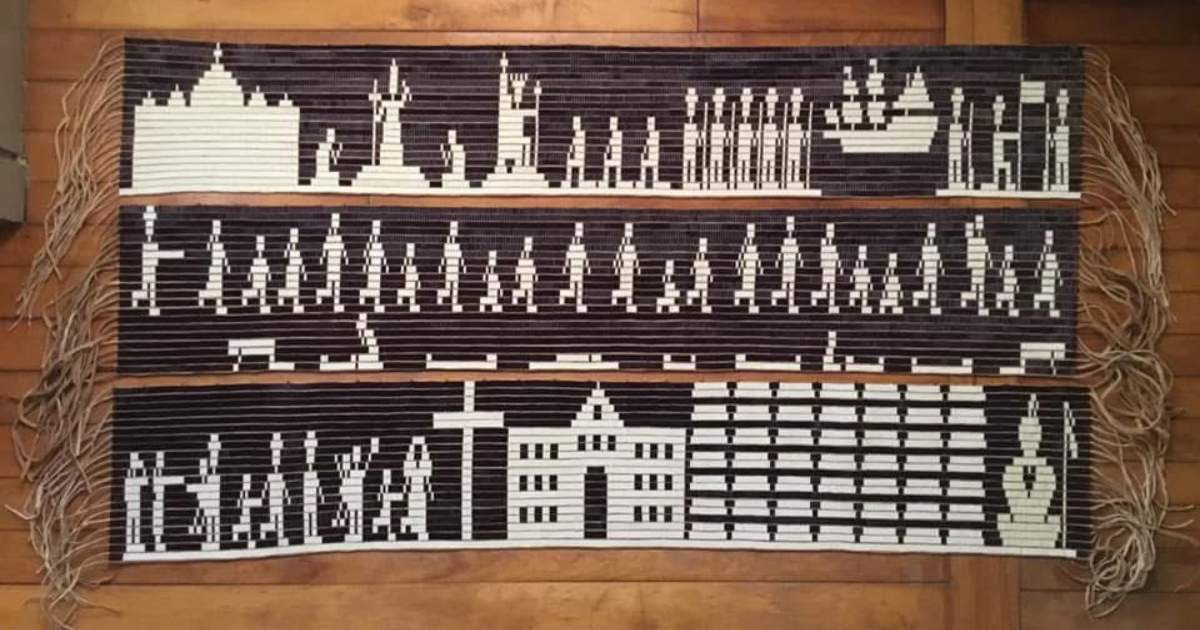
A chilkat blanket the size of a killer whale
Anna Brown Ehlers (T'lingit) was just four-years old when she watched her uncle, a retired military veteran, walk in Alaska's first Fourth of July parade.
"Alaska had just become a state in 1959," she said. "My uncle was wearing a chilkat blanket. I saw the graceful movement on the fringe and I knew that's all I wanted to do."
She didn't know it at the time, but it was the planting of a seed that has since grown into a lifetime career as a Native artist, much of her work centered on the very thing she fell in love with so many years ago—chilkat weaving.
"It's fabulous," Ehlers said from her home in Juneau, Alaska. "It's what I always dreamed of doing."
Ehlers is a familiar face to the First Peoples Fund family and says the support she has received from the organization helped propel her career to new levels. Ehlers was a 2000 Community Spirit Award honoree and she has since received multiple fellowships and grants, including the Artist in Business Leadership Fellowship.
"It's magnificent," she said, of the relationship she continues with First Peoples Fund today. "That's what's kept me going through the years."
The funding she has received has helped her with the logistical side of business—keeping her office going, paying for the Internet, and purchasing cameras. And just as important, Ehlers said, it has meant a lot to be funded and encouraged by a national organization with such expertise.
"It's just really nice when somebody believes in you," she said.
Ehlers began weaving in her twenties, learning from a family friend who was 92 at the time and also from a military background. The strict learning environment was challenging, Ehlers said, but is probably the reason she became so good at the art.
"She was very mean," Ehlers said, laughing. "She'd pinch the upper part of my arms and tell me to take it out. She'd kick me under the table. But, she was a good teacher."
Since then, Ehlers has become well known for her chilkat weavings; most recently weaving her largest ever chilkat piece—an 8-by-7 foot blanket that will be auctioned off online. The design was done by a friend who also designs totem poles.
"I wanted a design from him for years," Ehlers said. "It took him 25 years before he finally got this design made."
The blanket is the design of a killer whale with an angled top reminiscent of an old tribal longhouse. Ehlers said the blanket was almost done one night when she did some research on killer whales and discovered that newborn killer whales are between 7.5 and 8 feet long when they are born and weigh about 400 pounds.
"So, it ended up being the size of a newborn killer whale," she said.
Ehlers is far from the end of her career. She continues her work today making large blankets, tunics, regalia and aprons. She is currently working on a project for the Fabric Workshop and Museum in Philadelphia, Pennsylvania, which includes a chilkat apron that will be sewn on to the smoked moose hide.
And then in the spring, it will be time for one of Ehlers' favorite activities—collecting cedar bark for the art pieces that are made out of wool and yellow cedar bark. Because there are no cedar trees in Juno, she must travel to the coast to collect the materials.
She remembers one trip fondly—the time she took her daughter and one of her grandkids, the three of them combing the woods for trees with straight grain and fewer branches.
"You make a cut like the bottom of a box on the south side of the tree," she said. "You wear gloves and you take that bark and you run. And then, when you feel like it's reaching the top, then you jump and it rips off the top of the tree."
It's one of the beautiful, traditional activities Ehlers anticipated so many years ago when she first headed down the path of artistry.
"It's a whole lot of fun," she said.









































































































